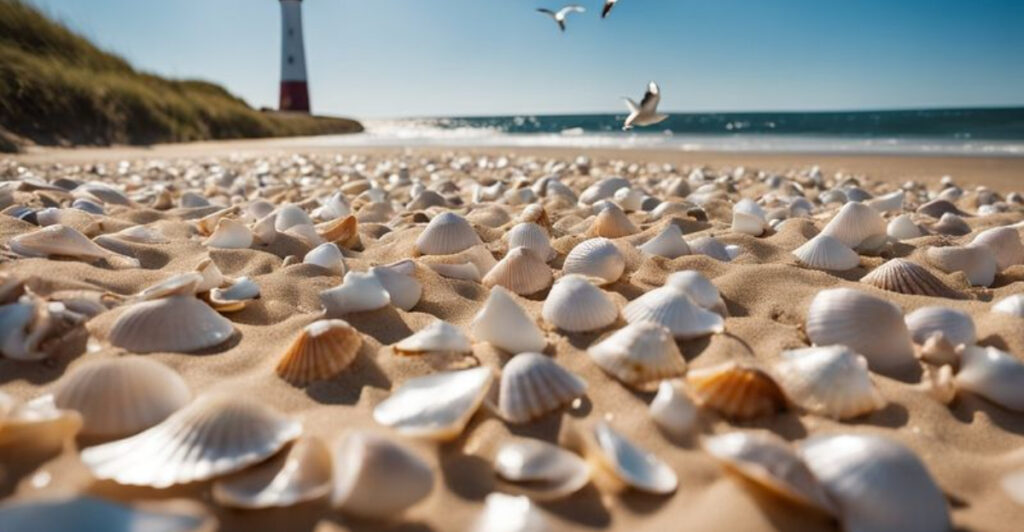Nestled along North Carolina’s Outer Banks, Ocracoke Island stands as a hidden gem accessible only by ferry or private boat. This remote barrier island combines pristine beaches, rich pirate history, and small-town charm into an unforgettable coastal escape. For shell collectors and solitude seekers alike, Ocracoke’s 16 miles of undeveloped shoreline hide treasures waiting to be discovered.
Shelling Paradise: Uncovering Treasures Along 16 Miles of Pristine Beach
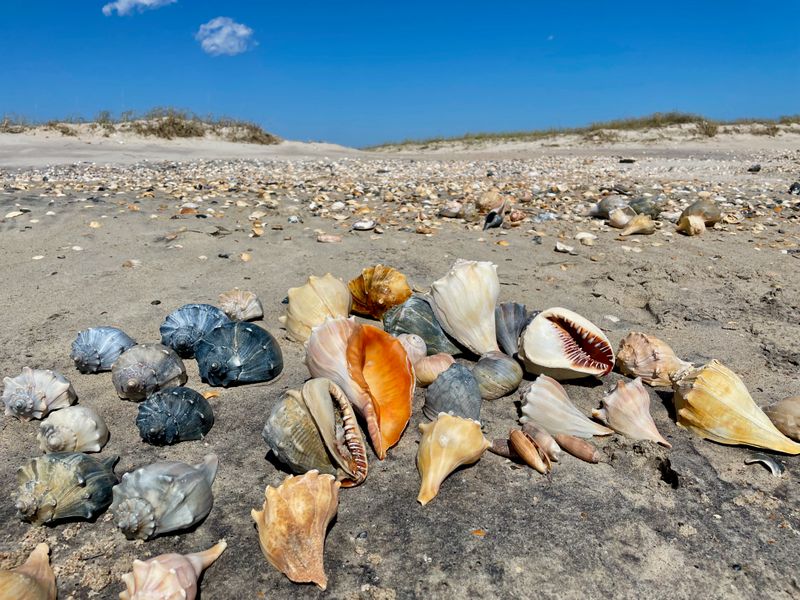
Scattered across Ocracoke’s untouched shoreline lies a shell collector’s dream come true. The island’s isolation and limited development have created perfect conditions for finding extraordinary specimens – from delicate sand dollars to the coveted Scotch Bonnet (North Carolina’s state shell).
Morning low tides reveal the beach’s freshest offerings, especially after overnight storms wash new treasures ashore. Locals recommend walking with your gaze downward and a mesh collection bag in hand.
Unlike heavily visited beaches elsewhere, Ocracoke’s shoreline often yields complete, unbroken specimens. The most dedicated collectors arrive at dawn when competition is scarce and the beach has yet to be combed by other enthusiasts.
Northern Beach Hideaways: Where the Best Shells Actually Hide
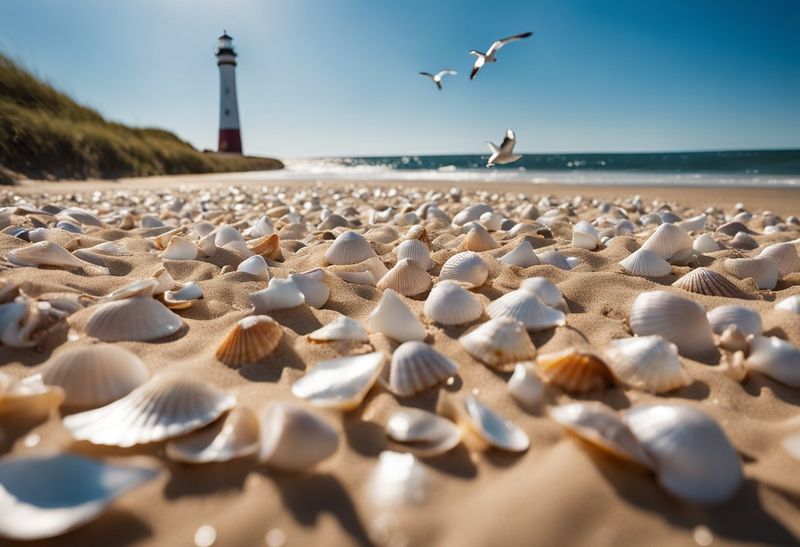
Venture beyond the popular spots to Ramp 59 on Ocracoke’s northern shores, where fewer footprints mean greater shell-hunting success. This quieter stretch boasts larger specimens like helmet conches and perfectly preserved moon snails that rarely survive intact near busier areas.
The northern beaches feature deeper drop-offs close to shore, creating natural collection points where currents deposit shells during changing tides. Early morning expeditions here often yield the day’s most impressive finds.
The journey requires extra effort – a longer drive and sometimes a brief hike – but the reward is worth it. Pack water, sunscreen, and a camera to document your discoveries before carefully selecting which treasures to bring home.
Springer’s Point: The Hidden Nature Preserve with Historical Secrets
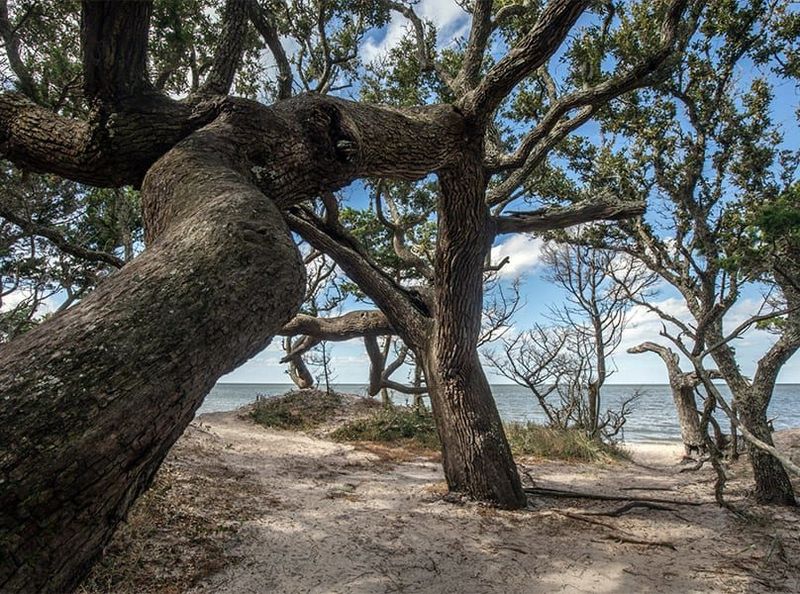
Ancient live oaks drape with Spanish moss create a magical entrance to this 120-acre sanctuary few visitors discover. Springer’s Point Nature Preserve offers more than shells – it’s a journey through maritime forest leading to secluded soundfront beaches where Blackbeard once anchored his ship.
Follow the winding trail through dense vegetation until it opens to reveal peaceful coves where unusual shells wash in from Pamlico Sound rather than the Atlantic. The water’s gentler action here preserves delicate specimens often damaged on ocean-facing beaches.
Bird enthusiasts should bring binoculars – the preserve hosts over 40 species including painted buntings and ospreys. The preserve’s caretakers request visitors take only photographs of historical areas, though shell collecting is permitted along designated shorelines.
Master the Tides: Strategic Shelling for Maximum Discoveries
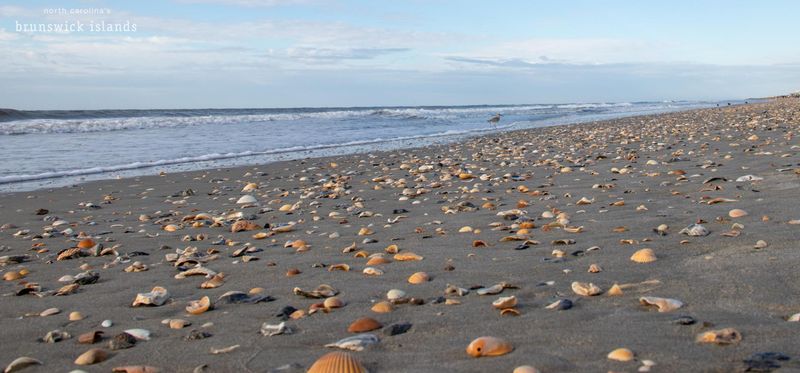
The difference between returning home with a handful of broken fragments versus exceptional specimens comes down to understanding Ocracoke’s tidal patterns. Professional shell hunters swear by the “minus tide” – exceptionally low tides that expose rarely seen sections of beach.
Winter brings fewer visitors but delivers the island’s most dramatic shell deposits. Powerful nor’easters churn up deeper waters, dislodging specimens rarely seen during calmer summer months.
Always carry a tide chart (available free at the visitor center) and plan excursions for the hour before and after low tide. Focus on areas where natural debris collects – these shell piles often contain hidden treasures overlooked by casual beachcombers who stick to the water’s edge.
Island Life: Beyond the Beach and Into Local Culture
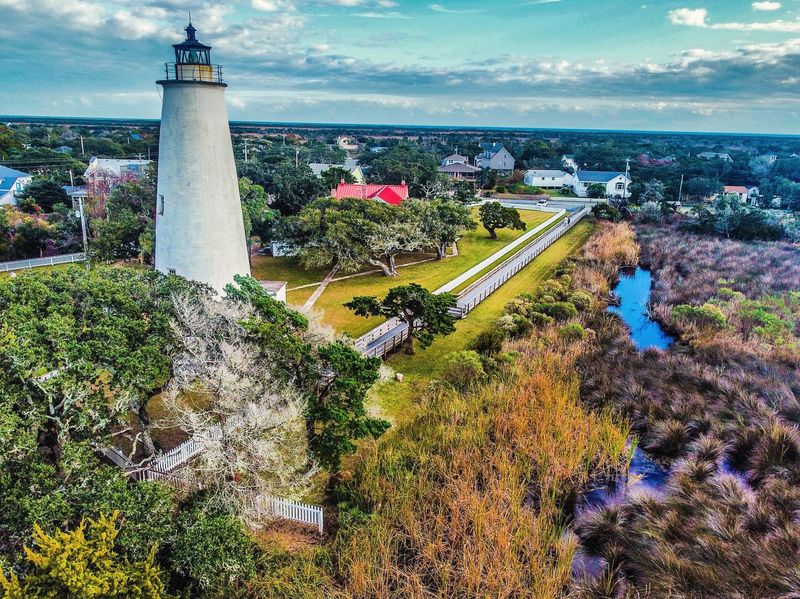
The ferry journey to Ocracoke isn’t merely transportation – it’s the first step in shedding mainland hurry. Once ashore, rent a bicycle from Ride the Wind or a golf cart from Ocracoke Island Golf Carts to embrace the island’s 25 mph pace.
Between shell hunting expeditions, climb the 75 steps of Ocracoke Lighthouse for panoramic views or visit the Ocracoke Preservation Museum to understand the unique “Hoi Toider” accent still spoken by some islanders. This distinctive brogue, with roots in 18th-century English, represents one of America’s most endangered dialects.
Cap your day at Howard’s Pub, where the seafood arrives fresh from local waters and conversations with multigenerational islanders reveal shell-finding spots never mentioned in guidebooks.
Pirate History Meets Natural Wonders: Blackbeard’s Legacy

“Teach’s Hole” sounds like fiction but marks the actual spot where history’s most notorious pirate met his end in 1718. The channel near Springer’s Point still bears Blackbeard’s real name (Edward Teach) and hides shells with stories to tell.
Some locals claim certain black-speckled shells found exclusively in this area contain fragments of gunpowder from the historic battle. While scientifically dubious, these “Blackbeard shells” make for wonderful souvenirs and storytelling.
Visit during the annual Blackbeard’s Pirate Jamboree (October) when historical reenactors recreate the famous battle. Early mornings following this event offer exceptional shelling opportunities as hundreds of costumed feet stir up the sand, revealing treasures previously buried beneath.
Conservation and Responsible Shelling: Preserving Paradise
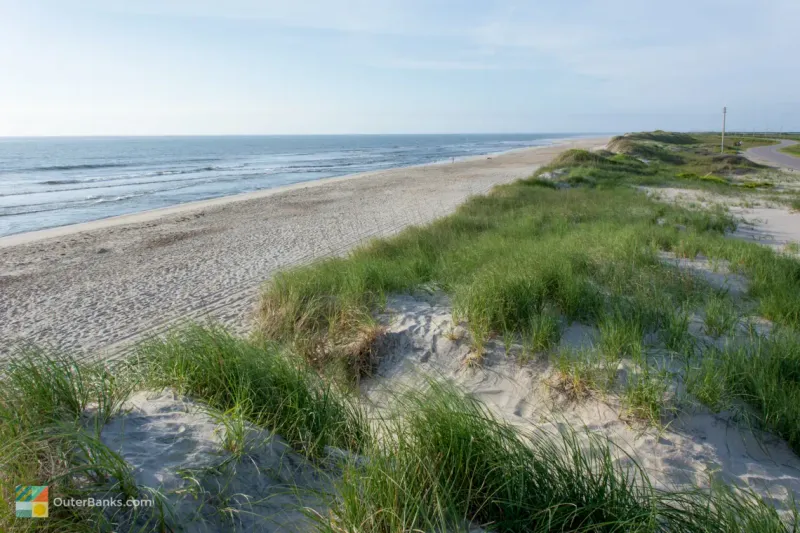
Ocracoke’s shell abundance exists because generations of visitors and locals have practiced restraint. The unwritten island rule: take only what you’ll truly treasure, leave what’s still living, and always leave habitat shells for hermit crabs and other marine creatures.
Learn to identify live shells before collecting – if the shell feels heavy for its size or shows resistance when gently touched, it likely contains an animal. Certain species like the lightning whelk face population pressures, so consider photographing rather than collecting these specimens.
The National Park Service, which manages most of Ocracoke’s beaches, permits reasonable shell collecting for personal use while prohibiting commercial harvest. By practicing responsible shelling, you help ensure future generations will discover the same magic along these remote shores.

